
The Battle of the Milvian Bridge took place between the Roman Emperors Constantine I and Maxentius on 28 October 312 AD. It takes its name from the Milvian Bridge, an important route over the Tiber. Constantine won the battle and started on the path that led him to end the Tetrarchy and become the sole ruler of the Roman Empire. Maxentius drowned in the Tiber during the battle; his body was later taken from the river and decapitated, and his head was paraded through the streets of Rome on the day following the battle before being taken to Africa.
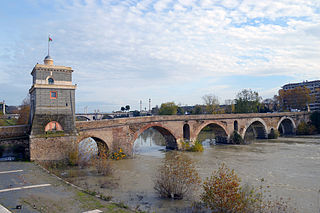
The MilvianBridge is a bridge over the Tiber in northern Rome, Italy. It was an economically and strategically important bridge in the era of the Roman Empire and was the site of the famous Battle of the Milvian Bridge in 312, which led to the imperial rule of Constantine.
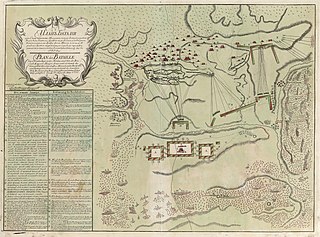
The Battle of Stavuchany was a battle between the Russian and Ottoman armies, which took place on August 28 (17) of 1739 during the Russo-Turkish War of 1735-1739.
The Battle of the Milvian Bridge may also refer to:

The Battle of the Milvian Bridge, or The Battle at Pons Milvius, is a fresco in one of the rooms that are now known as the Stanze di Raffaello, in the Apostolic Palace in the Vatican depicting the Battle of the Milvian Bridge.

Alexander Nikolayevich Samokhvalov was a Soviet Russian painter, watercolorist, graphic artist, illustrator, art teacher and Honored Arts Worker of the RSFSR, who lived and worked in Leningrad. He was a member of the Leningrad branch of Union of Artists of Russian Federation, and was regarded as one of the founders and brightest representatives of the Leningrad school of painting, most famous for his genre and portrait painting.

Alexander Petrovich Koroviakov was a Soviet, Russian painter and art teacher, lived and worked in Leningrad – Saint Petersburg, a member of the Saint Petersburg Union of Artists, regarded as a representative of the Leningrad school of painting.
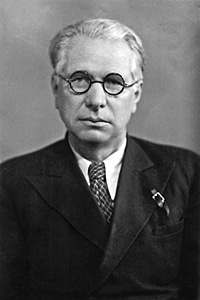
Rudolf Rudolfovich Frentz was a Soviet and Russian painter, watercolorist, graphic artist, illustrator and art teacher who lived and worked in Leningrad. He was a member of the Leningrad Union of Artists and one of the founders of the Leningrad school of painting, most famous for his battle and monumental painting.

Anatoli Nenartovich was a Soviet Russian painter, who lived and worked in Leningrad and known as representative of the Leningrad school of painting, most famous for his cityscapes with a road building works scenes.

Vladimir Fedorovich Chekalov was a Russian Soviet realist painter and art teacher, who lived and worked in Leningrad. He was a member of the Leningrad Union of Artists, and regarded as a representative of the Leningrad school of painting, most famous for his battle and genre paintings.
Kapitolina Alexeevna Rumiantseva was a Russian Soviet realist painter and graphic artist, who lived and worked in Saint Petersburg. She was a member of the Saint Petersburg Union of Artists, regarded as one of representatives of the Leningrad school of painting, most famous for her still life paintings.

Malaya Sadovaya Street is a 1979 oil painting by the Russian artist Alexander Semionov, depicting Malaya Sadovaya Street in Leningrad on rainy day of the end of the 1970s. This cityscape was painted in traditions of the Leningrad School of Painting and Soviet figurative painting of late socialist realism with their typical synthesis of realistic and impressionistic traditions to create an image of modernity.
German Pavlovich Yegoshin was a Russian and Soviet painter and art educator, an Honored Artist of the Russian Federation, who lived and worked in Saint Petersburg. He was a member of the Leningrad Union of Soviet Artists, and was regarded as one of the representatives of the Leningrad School of Painting.
Boris Yakovlevich Maluev was a Soviet Russian painter, a member of the Leningrad Union of Artists, Honored Artist of the RSFSR, lived and worked in Leningrad, regarded as one of representatives of the Leningrad school of painting, most famous for his historical and genre paintings.

Nevsky Prospekt is a cityscape painting by Gleb Savinov, Russian painter regarded as one of the leading representatives of the Leningrad School of Painting, most known for his genre and portrait painting. The cityscape depicts the life of the main street of Leningrad on a summer day of the mid-1980s.
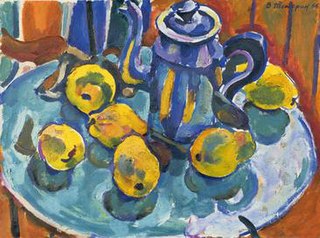
Quince and Teapot is a decorative still life of Russian painter Victor Kuzmich Teterin, which depicts the quince fruit and teapot on a silver tray.

Exhibition of Leningrad artists of 1960 become one of the largest Soviet Art Exhibition of 1960 year. The Exhibition took place in State Russian Museum.
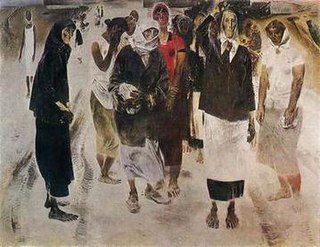
Mothers, Sisters is a 1967 painting by Russian artist Yevsey Moiseyenko (1916–1988).
The House of Creativity "Staraya Ladoga" was an all-Russian centre for artistic creativity, which existed in the Volkhovsky District of Leningrad Oblast from the mid-20th century up to the 1990s. It was located opposite the ancient village of Staraya Ladoga on the right bank of the Volkhov River.

The Rape of Europa is an oil on canvas painting by Claude Lorrain, from 1655. With its pendant The Battle of the Milvian Bridge, it is now in the Pushkin Museum, in Moscow.















